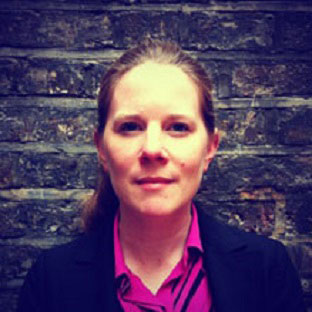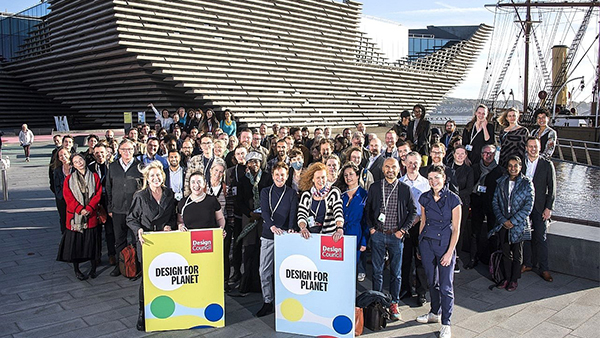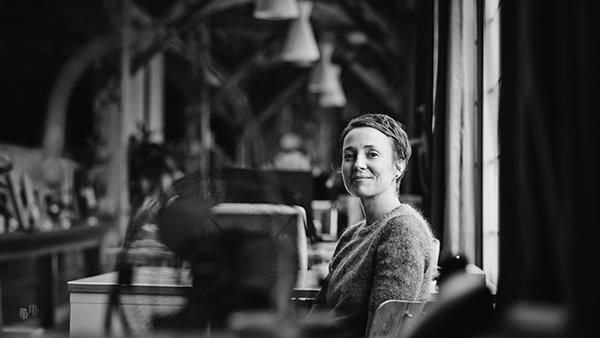Take a look around you. Wherever you are there will almost certainly be something that has been designed. The buying and selling of these objects, the way they are made and the people and raw materials that are involved in the making build economies and develop societies. The design industry is a key part of this loop. With around 11% of the UK workforce in our sector, we play a key role in the economy and account for 7% of GVA, with a third of this coming from consumer-related spending (ref).
The designer's role of adding value to products is fundamental to the markets. But sadly this industry, like many others, is only slowly waking up to some of the negative impacts of this system: the over extraction of resources, the exploitation of workforces and growing toxic waste streams. The staggering fact is that, according to EU research, 80% of a product’s environmental impacts are decided during the design stage. Ultimately our decisions at the very beginning stages on material specification or assembly process will be instrumental in determining the product’s lifetime in use and method of disposal (whether re-use, recycling or landfill), but our industry seems to have very little understanding of this. Why is this so?
To understand the challenges around system change you need to go right back to the beginning. Everything around you once had a written brief given to the design team to tell them what they needed to consider. These design briefs could include quite specific instructions which, in summary, might say: ‘We want a kettle design that is weighted so it can be held comfortably by an elderly arthritic person; is able to boil two cups of water in less than twenty seconds; uses minimum metal in the moulding; and retails at £12.99’. Or, it may say something about the aesthetic outcome: ‘We need a 50 page full colour report that makes our company look youthful and innovative’. However, you can absolutely guarantee that a brief will not include phrases like: ‘This product is required to be designed for a second life’, ‘must be able to have all its raw materials fully recoverable to their maximum value’, or ‘must not in any way be diverted to landfill in the first 5 years of its life’.
Imagine if it did. Consider how different our products would look, how differently we would use them, and how much easier it would be to recapture the materials. It would radically change the way our products were made. It would require a lot more collaboration and knowledge transfer around the extended supply chain, with those that see the problems at the end of life (ie waste disposal or materials recovery experts) telling those that potentially build in those problems at the beginning (ie designers) what they are experiencing. Design would not be so focused on the initial sell but would extend its vision far into a product’s potential second or third ‘life’, or even towards a ‘circular system’ of continuous re-use. To get to this point, the whole process of design, manufacture, recovery and ultimately re-manufacture would need a complete re-think.
Over the last 18 months The Great Recovery project at the RSA has been investigating the role of design in the ‘circular economy’. We have been building networks and using the creativity of the design industry to help understand why current design does not include ‘closed loop’ principles (where product ingredients can be recovered back into raw materials through re-use, industrial symbiosis and recycling). Our programme of public workshops and networking events set in the industrial landscapes of recovery and recycling facilities, disused tin mines, and materials research labs worked with people across all sectors mapped in our circular network model. 
Participants went through a process based on the design principles of ‘Tear Down’ – where you literally pull products off the recycling pile and take them apart to understand how they are currently designed, manufactured and recovered/disposed, and then ‘Design Up’ - a process of rebuilding and redesigning the products around the four design models for circularity mapped by the programme: longevity, leasing/service, re-use in manufacture and material recovery. 
This first phase of work supported the competition calls from the Technology Strategy Board on ‘New Designs for a Circular Economy’. These calls invested up to £1.25m into a range of feasibility studies proposed by business-led groups that included collaborative design partners.
The lessons that came out of these initial investigations underlined some key issues:
(i) the role of design is crucial to circularity but very few designers understand or think about what happens to the products and services they design at the end of their life;
(ii) new business models are needed to support the circular economy;
(iii) the ability to track and trace materials is key to reverse engineering our manufacturing processes and closing the loop;
(iv) smarter logistics are required based on better information;
(v) building new partnerships around the supply chain and knowledge networks is critical.
The inaugural Resource show sees the launch of The Great Recovery’s next phase of work in a two-year programme of work that will bring together materials science innovators, design experts and end-of-life specialists to explore the interrelationships and key levers in the manufacturing process. In a series of investigatory workshops we will be seeking further understanding around the challenges and obstacles faced by businesses and members of the circular network when considering the shift towards circularity. We need the problem holders, ideas creators and collaborators to get involved and share their resource knowledge.
In a move to nurture disruptive thinking across the network, The Great Recovery plans to develop short-term immersive design residencies that can set up inside recovery facilities around the UK. These design teams will be there to observe and experience the complexity of recovery systems, to help inform new thinking around current waste streams and new product designs. We will also be growing our network of pioneering professionals and circular economy stakeholders, developing thought leadership, influencing policy and nurturing disruptive thinking to fast-track innovation. By their nature, many of these activities will be highly creative and we are looking for interested recovery facilities, designers, materials experts and other stakeholders who want to participate.
Related articles
-
A design revolution for the climate emergency
Joanna Choukeir
Joanna Choukeir on Design for Planet, the global gathering of designers during COP26, and the changes design must make.
-
-




Be the first to write a comment
Comments
Please login to post a comment or reply
Don't have an account? Click here to register.